Find Help
More Items From Ergsy search
-
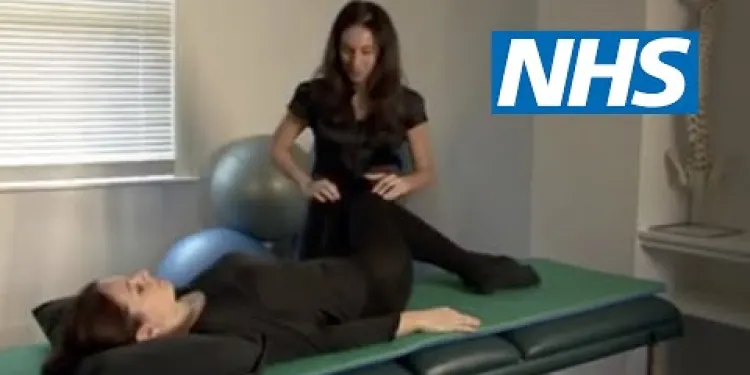
Exercises for sciatica: piriformis syndrome | NHS
Relevance: 100%
-
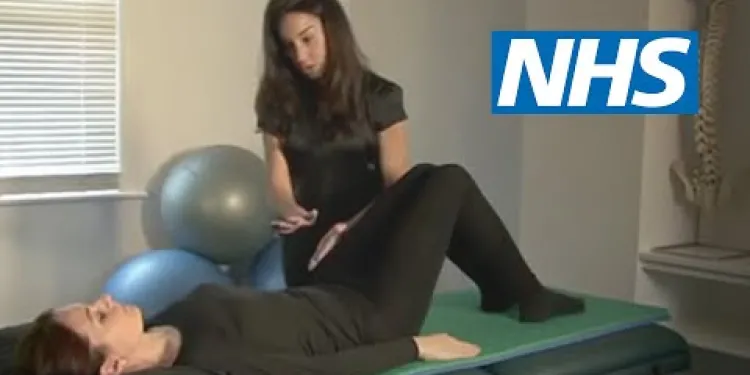
Exercises for sciatica: degenerative disc disease | NHS
Relevance: 57%
-
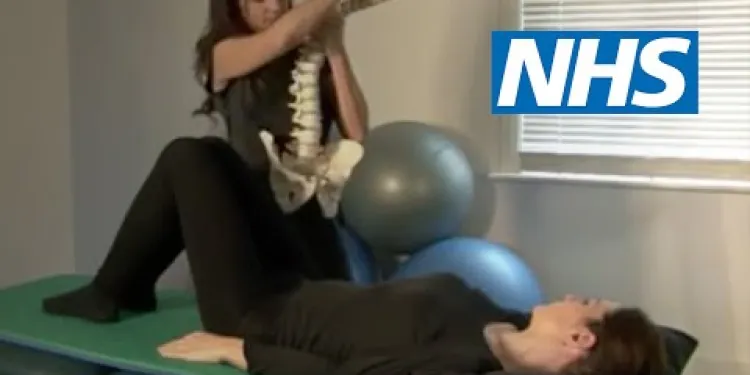
Exercises for sciatica: herniated or slipped disc | NHS
Relevance: 56%
-
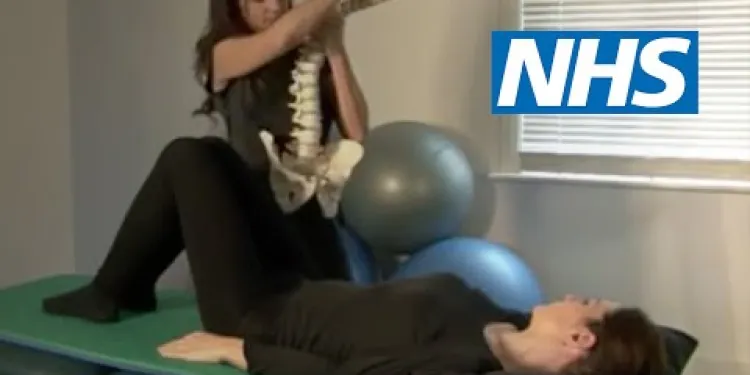
Exercises for sciatica: herniated or slipped disc | NHS
Relevance: 54%
-
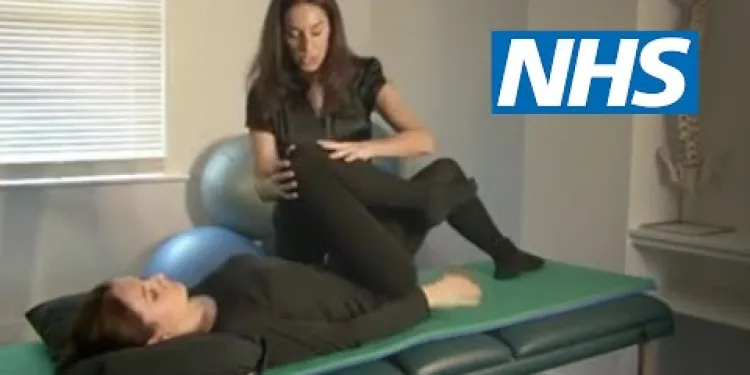
Exercises for sciatica: spinal stenosis | NHS
Relevance: 40%
-

Are there specific exercises that can help with Carpal Tunnel Syndrome?
Relevance: 32%
-

Evidence-Based Interventions: injections for non-specific low back pain without sciatica
Relevance: 29%
-

Carpal Tunnel Syndrome
Relevance: 25%
-

Is chronic fatigue syndrome contagious?
Relevance: 24%
-

Prader-Willi Syndrome | NHS
Relevance: 23%
-
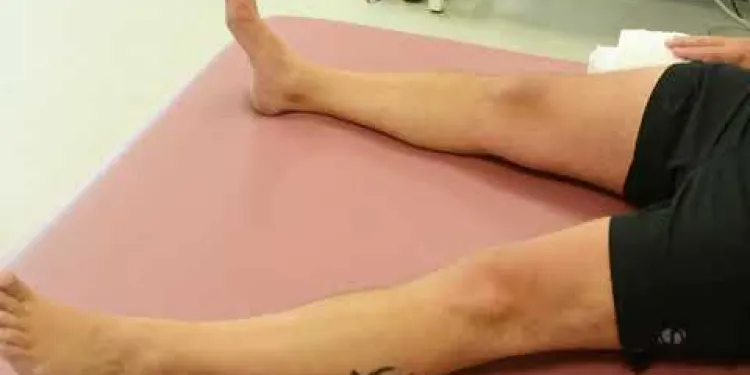
Joint School - Hip Exercises
Relevance: 23%
-

How can I prevent Carpal Tunnel Syndrome?
Relevance: 23%
-

What is chronic fatigue syndrome?
Relevance: 23%
-

What is Cushing's syndrome?
Relevance: 23%
-

Greater trochanteric pain syndrome
Relevance: 23%
-

Is Carpal Tunnel Syndrome covered by the NHS?
Relevance: 22%
-

Munchausen's syndrome | NHS
Relevance: 22%
-

What non-surgical treatments are available for Carpal Tunnel Syndrome?
Relevance: 22%
-

What causes Carpal Tunnel Syndrome?
Relevance: 21%
-

What is Carpal Tunnel Syndrome (CTS)?
Relevance: 21%
-

Is chronic fatigue syndrome a mental illness?
Relevance: 21%
-

Can Carpal Tunnel Syndrome recur after treatment?
Relevance: 21%
-

Turner syndrome: Beyond the classic XO phenotype
Relevance: 21%
-

Are there any alternative treatments for Carpal Tunnel Syndrome?
Relevance: 21%
-

What is irritable bowel syndrome (IBS)?
Relevance: 20%
-

Does physical exercise help people with CFS?
Relevance: 20%
-

About irritable bowel syndrome (IBS)
Relevance: 20%
-

Can lifestyle changes help manage Carpal Tunnel Syndrome?
Relevance: 20%
-

About irritable bowel syndrome (IBS)
Relevance: 20%
-

Can I work or continue sports activities if I have Carpal Tunnel Syndrome?
Relevance: 20%
-

Having a child with Down's syndrome | NHS
Relevance: 20%
-

How is chronic fatigue syndrome treated?
Relevance: 20%
-

Down's syndrome: Emily's story | NHS
Relevance: 20%
-
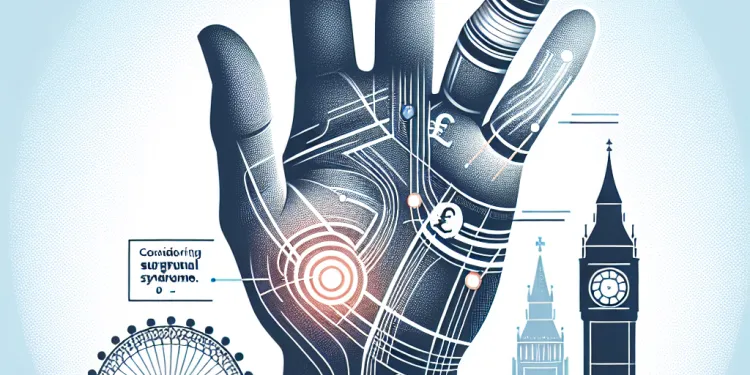
When should I consider surgery for Carpal Tunnel Syndrome?
Relevance: 20%
-

Treating irritable bowel syndrome (IBS)
Relevance: 20%
-

Charles Bonnet Syndrome
Relevance: 20%
-

Can children develop chronic fatigue syndrome?
Relevance: 20%
-

Neck Exercises
Relevance: 20%
-

What causes chronic fatigue syndrome?
Relevance: 20%
-

Neck Exercises
Relevance: 20%
Exercises for Sciatica: Piriformis Syndrome | NHS
Understanding Piriformis Syndrome
Piriformis syndrome is a condition where the piriformis muscle, located in the buttock region, spasms and causes buttock pain. The muscle can also irritate the nearby sciatic nerve and cause pain, numbness, and tingling along the back of the leg and into the foot (similar to sciatic pain). This condition is often confused with sciatica, but it is specifically related to the piriformis muscle. Understanding the reasons behind the pain can help in administering the right exercises and treatments.Importance of Exercising for Piriformis Syndrome
Engaging in specific exercises can relieve symptoms associated with piriformis syndrome and help in recovery. Exercises primarily focus on stretching and strengthening the piriformis muscle and surrounding muscle groups. The NHS recommends regular exercise to maintain flexibility and strengthen the lower back and buttocks, which in turn could reduce pain and discomfort caused by piriformis syndrome.Recommended Exercises for Piriformis Syndrome
Here are some exercises recommended by health professionals to alleviate the symptoms of piriformis syndrome:Piriformis Stretch
- **How to Perform**: Lie on your back and bend both knees. Place the ankle of the affected leg over the opposite knee. Grasp the knee of the unaffected leg and gently pull it towards your chest until you feel the stretch in the buttock of the affected leg. - **Duration**: Hold the stretch for 20-30 seconds. - **Repetitions**: Repeat 3-5 times.Seated Piriformis Stretch
- **How to Perform**: Sit on a chair with a straight back. Place the ankle of the affected leg on the opposite knee. Lean forward slightly until you feel a stretch in the buttock of the affected leg. - **Duration**: Hold for 20-30 seconds. - **Repetitions**: Repeat 3-5 times.Hip External Rotator Stretch
- **How to Perform**: Lie on your back and bend both knees. Cross the affected leg over the opposite thigh. Grasp both hands behind the thigh of the unaffected leg and pull towards your chest. - **Duration**: Hold for 20-30 seconds. - **Repetitions**: Repeat 3-5 times.Strengthening Exercises
In addition to stretching, strengthening exercises can aid recovery by enhancing the stability of the piriformis muscle.Clamshell
- **How to Perform**: Lie on your side with your legs stacked and knees bent at a 90-degree angle. Keeping your feet together, lift the top knee as high as you can without disturbing your pelvis. - **Repetitions**: Perform 10-15 repetitions on each side.Bridges
- **How to Perform**: Lie on your back with your feet flat on the floor and knees bent. Lift your hips towards the ceiling, hold briefly, and then lower back to the start position. - **Repetitions**: Perform 10-15 repetitions. Incorporate these exercises into your daily routine to alleviate symptoms of piriformis syndrome, but always consult with a healthcare provider or a physiotherapist before starting any new exercise regimen, especially if you are experiencing severe pain. The NHS can provide guidance and help tailor exercises to your specific needs.Exercises for Sciatica: Piriformis Syndrome | NHS
What is Piriformis Syndrome?
Piriformis syndrome happens when a muscle in your bottom, called the piriformis muscle, gets tight and causes pain. This muscle can press on the sciatic nerve, leading to pain, numbness, and tingling in your leg and foot. It feels a bit like sciatica, but it's mainly about the piriformis muscle. Knowing what causes the pain helps us find the right exercises and treatments.Why Exercise is Important for Piriformis Syndrome
Doing special exercises can help with the pain from piriformis syndrome and help you get better. These exercises stretch and make the muscles in your bottom and lower back stronger. The NHS suggests regular exercise to keep your body flexible and strong, which can lower pain.Exercises to Help with Piriformis Syndrome
Here are some exercises that health experts say can help with piriformis syndrome:Piriformis Stretch
- **How to Do it**: Lie on your back. Bend your knees. Put the ankle of the sore leg on the other knee. Hold the other knee with your hands and gently pull it towards your chest. You should feel a stretch in your bottom. - **Hold for**: 20-30 seconds. - **Do it**: 3-5 times.Seated Piriformis Stretch
- **How to Do it**: Sit up straight on a chair. Put the ankle of the sore leg on the other knee. Lean forward a little until you feel a stretch in your bottom. - **Hold for**: 20-30 seconds. - **Do it**: 3-5 times.Hip External Rotator Stretch
- **How to Do it**: Lie on your back. Bend your knees. Cross the sore leg over the other thigh. Hold your hands behind the thigh of the other leg and pull it towards your chest. - **Hold for**: 20-30 seconds. - **Do it**: 3-5 times.Strengthening Exercises
Besides stretching, making your piriformis muscle stronger can help you get better.Clamshell
- **How to Do it**: Lie on your side with bent knees. Keep your feet together, and lift the top knee as high as you can without moving your hips. - **Do it**: 10-15 times on each side.Bridges
- **How to Do it**: Lie on your back. Keep your feet flat on the floor and your knees bent. Lift your hips up to the ceiling, hold for a moment, and then lower them. - **Do it**: 10-15 times. Try to do these exercises every day to help with piriformis syndrome. Always talk to a doctor or physiotherapist before starting new exercises, especially if you have a lot of pain. The NHS can help and show you the best exercises for you.Frequently Asked Questions
What is piriformis syndrome?
Piriformis syndrome is a condition where the piriformis muscle, located in the buttock region, spasms and causes buttock pain. This can also irritate the nearby sciatic nerve and cause pain, numbness, and tingling along the back of the leg and into the foot.
What are common symptoms of piriformis syndrome?
Common symptoms include pain, tingling, or numbness in the buttocks. The pain can be severe and extend down the length of the sciatic nerve (called sciatica). Symptoms often worsen after sitting for long periods or activities that involve hip rotation.
How is piriformis syndrome diagnosed?
Diagnosis is typically based on a patient’s history, symptoms, and a physical examination. Imaging tests like MRI or CT scans are occasionally used to rule out other conditions that cause similar symptoms.
What exercises can help relieve piriformis syndrome?
Exercises that stretch and strengthen the piriformis muscle and surrounding muscles can help. This includes hip and buttock stretches, sciatic nerve stretches, and low-impact aerobic exercises.
Can physical therapy help with piriformis syndrome?
Yes, physical therapy can be very effective in treating piriformis syndrome. It usually involves specific stretches, strengthening exercises, and techniques to improve flexibility and reduce pressure on the piriformis muscle.
Are there any particular stretches for piriformis syndrome?
Key stretches include the piriformis stretch, the supine piriformis stretch, and the seated piriformis stretch. These help to elongate the piriformis muscle and alleviate tension and pressure on the sciatic nerve.
What lifestyle changes can help with piriformis syndrome?
Maintaining a healthy weight, avoiding prolonged sitting, staying active with low-impact exercises, and properly warming up before physical activities can help manage symptoms and prevent irritation of the piriformis muscle.
Can medication help with piriformis syndrome?
Over-the-counter pain relievers like ibuprofen or acetaminophen can help manage pain. In more severe cases, a doctor may prescribe stronger pain medications or corticosteroid injections.
Is surgery ever required for piriformis syndrome?
Surgery is rarely needed and is usually considered only after conservative treatments have failed. Surgical options aim to relieve the pressure on the sciatic nerve by adjusting the piriformis muscle.
Are there any risk factors for developing piriformis syndrome?
Risk factors include a sedentary lifestyle, prolonged sitting, overuse or injury to the piriformis muscle, and certain activities that require repetitive hip movements like running or climbing stairs.
Can piriformis syndrome cause back pain?
While piriformis syndrome primarily causes buttock pain, it can also cause referred pain in the lower back if the sciatic nerve is affected.
How long does it take to recover from piriformis syndrome?
Recovery time varies depending on the severity of the condition and the effectiveness of treatment. It can take several weeks to several months for symptoms to significantly improve with consistent treatment.
Can I exercise with piriformis syndrome?
Yes, regular exercise is often recommended to strengthen muscles and improve flexibility. However, it’s important to avoid exercises that worsen symptoms and focus on low-impact and stretching exercises.
Can piriformis syndrome be prevented?
While it may not always be preventable, maintaining good posture, staying active, avoiding prolonged sitting, and performing regular stretching and strengthening exercises can help reduce the risk.
Should I see a GP for piriformis syndrome?
If you experience symptoms of piriformis syndrome, it's a good idea to consult a GP. They can help diagnose the condition and recommend appropriate treatment options, which might include referral to a physiotherapist.
What is piriformis syndrome?
Piriformis syndrome is when a muscle in your bottom, called the piriformis, hurts the big nerve in your leg. This can make your leg feel sore or tingly. If you need help, you can try using pictures or ask someone to explain it to you. You can also try gentle exercises to make it feel better.
Piriformis syndrome happens when a muscle in your bum, called the piriformis, tightens up and makes your bum hurt. This muscle can also bother the sciatic nerve, which can make your leg and foot feel sore, numb, or tingly.
Here are some things that can help you understand and feel better:
- Stretching: Gentle stretches can help relax the piriformis muscle.
- Warmth: A warm pack on your bum might make the muscle feel better.
- Exercise: Easy exercises can make your muscle strong and happy.
- Talk to Someone: A doctor or a physiotherapist can help you know more.
You can use pictures or videos to see how stretches and exercises are done. Always ask for help if something is hard to understand.
What are signs of piriformis syndrome?
Piriformis syndrome can cause pain and problems. Here are some signs:
- You might feel pain in your bottom.
- You could feel a sharp pain that goes down your leg.
- Your leg might feel tingly or numb.
If you have these signs, it is good to talk to a doctor. Drawing pictures and using clear exercises can help you understand better how your body is feeling.
Sometimes, people feel pain, tingling, or numbness in their bottoms. The pain can be very strong and go down the leg along the big nerve, called the sciatic nerve. This is called sciatica. The feelings can get worse after sitting for a long time or doing things that make the hip turn.
Here are some ways to help:
- Take breaks to stand up and move around if sitting for too long hurts.
- Try gentle stretches for your back and hips to help ease the pain.
- If it hurts a lot, talk to a grown-up or a doctor you trust.
How do doctors find out if you have piriformis syndrome?
Doctors will listen to what hurts and check your body. They might ask you to move your leg in different ways. Sometimes, they may do special tests, like an MRI, to see inside your body. This helps them understand what is wrong.
Here are some tools that can help:
- Stretching Exercises: Doing easy exercises with your leg might help you feel better.
- Pain Journal: Write down when it hurts. This can help the doctor know more.
Ask a grown-up if you need help telling the doctor how you feel.
Doctors find out what might be wrong by asking you questions. They ask about how you feel and what problems you have. Then, they check your body to see how it is working. Sometimes, they take special pictures of the inside of your body. These pictures are called MRI or CT scans. They help to make sure your problem is not something else that looks the same.
It's okay to ask the doctor to explain things in simple words if you don't understand. You can also bring a friend or family member to help you remember what the doctor says. Writing down notes or drawing pictures might help too!
What exercises can help with piriformis syndrome?
Piriformis syndrome can cause pain in your bottom and legs. Doing some easy exercises can help make it feel better. Here are some ways to help:
- Do gentle stretches for your hips and legs. This can help make your muscles less tight.
- Try walking or moving around a little each day. This helps keep your body active.
- Ask a grown-up or a doctor for advice on exercises. They can show you what to do.
Using a soft floor mat or a towel can make exercises more comfortable. Always stop if you feel pain and ask for help if you need it.
Doing exercises can help. These exercises stretch and make the muscles around the hip and bottom stronger. Try these:
- Hip and bottom stretches
- Stretches for the sciatic nerve
- Easy activities like walking or swimming
These exercises can make you feel better. Using tools like videos or apps that show how to do these moves can help too.
Can exercises help with piriformis syndrome?
Piriformis syndrome can make your hip and leg hurt. Doing special exercises might help you feel better.
If you have piriformis syndrome, you can try talking to a physical therapist. They are people who know a lot about exercises that can help your body feel better.
Here are some things you can do:
- Gentle stretching: Stretch your legs and hips slowly to help them relax.
- Simple exercises: Do easy exercises to make your hip muscles stronger.
- Use a warm pack: A warm pack can help make your muscles feel better.
Ask an adult to help you if you need it. You can also use pictures or videos to see how to do the exercises.
Yes, physical therapy can help if you have piriformis syndrome. It includes special stretches and exercises to make the muscles stronger. It also helps you to be more flexible and takes pressure off the piriformis muscle.
Some tools that can help are:
- Heat packs: These can relax muscles.
- Foam rollers: These can be used to gently massage tight areas.
- Apps with simple exercise videos: These can show you how to do stretches safely.
It’s okay to ask for help when you try these exercises. A physiotherapist can show you the right way to do them.
Are there any special stretches for piriformis pain?
Piriformis pain can make your leg or back hurt. It helps to do stretches. These can make you feel better.
Here are some easy stretches you can try:
- Sit and Stretch: Sit on a chair. Put one foot on the other knee. Slowly lean forward. Feel the stretch in your bottom.
- Lying Stretch: Lie on your back. Put one foot over the other knee. Pull the leg towards you. Feel the stretch in your bottom.
- Stand and Stretch: Stand up. Put one foot on a low table or step. Bend forward slowly.
Remember to be gentle. Don't push too hard. It is okay if you feel a little stretch, but it should not hurt.
If it is hard for you to do these stretches, ask a friend or family member to help. You can also talk to a doctor or therapist for more help.
Important stretches are the piriformis stretch, the lying down piriformis stretch, and the sitting piriformis stretch. These stretches help to make the piriformis muscle longer and take away tightness and pressure off the sciatic nerve.
What changes can help if you have piriformis syndrome?
If you have piriformis syndrome, making some changes can help you feel better.
- Exercise: Try gentle stretches. Moving can help your muscles feel better.
- Rest: Take breaks to stop using the sore muscle too much.
- Ice or Heat: Put something cold or warm on the sore spot. This can take away pain.
- Good Posture: Sit and stand straight. This can help your muscles.
- Massage: A gentle rub can make muscles feel nice.
Ask a doctor or therapist if you need help. They can show you what to do.
Keep a healthy weight. Try not to sit for a long time. Do gentle exercises to stay active. Before you exercise, do warm-ups. These things can help your piriformis muscle feel better and stop it getting hurt.
Can medicine help with piriformis syndrome?
Pain medicine you can buy from a shop, like ibuprofen or acetaminophen, can help if you are hurting. If the pain is very bad, a doctor might give you stronger medicine or a special shot called a corticosteroid.
Do you ever need an operation for piriformis syndrome?
Surgery is not needed often. Doctors think about it only if other treatments do not work. Surgery helps by taking pressure off the sciatic nerve. Doctors do this by changing the piriformis muscle.
What can make you more likely to get piriformis syndrome?
Things that can cause problems include sitting too much and not moving enough. Hurting the piriformis muscle or using it too much can also cause trouble. Doing things like running or climbing stairs a lot can be a problem too.
Does piriformis syndrome make your back hurt?
Piriformis syndrome can make your back hurt. It is a problem with a muscle in your bottom. This muscle is called the piriformis. If it is tight or hurt, it can make your back feel sore. To feel better, you can try:
- Stretching exercises
- Warm baths
- Talking to a doctor or physiotherapist
These things can help your back feel better.
Piriformis syndrome can make your bottom hurt. It might also hurt your lower back if it bothers the big nerve there, called the sciatic nerve.
How long does it take to get better from piriformis syndrome?
Piriformis syndrome can make your hip or leg hurt. Getting better can take time. Everyone is different, so it can take a few days, weeks, or even longer.
Here are some ways to help you get better faster:
- Rest: Take breaks and don’t do activities that hurt.
- Exercise: Gentle stretches can help. Ask a doctor or therapist about good exercises.
- Ice or Heat: Ice can help with swelling. Heat can relax muscles.
- Medicine: Sometimes doctors give medicine to help with pain.
- Therapy: A physical therapist can show you exercises to feel better.
If you think you have piriformis syndrome, talk to a doctor for help.
The time it takes to get better can be different for each person. It depends on how serious the problem is and how well the treatment works. It might take a few weeks or a few months to feel much better if you keep following the treatment.
Can I do exercises if I have piriformis syndrome?
Piriformis syndrome can make your bottom sore. You might feel pain or tingles in your bottom or legs.
It is important to be gentle with your body. Some exercises can help and make you feel better.
Before you start, talk to a doctor or a physiotherapist. They can tell you what exercises are safe.
You can try these things to help:
- Do easy stretches to help your muscles.
- Go for a short, slow walk.
- Use a warm pack on your sore spot to make it feel better.
- Take breaks and rest when you need to.
Always listen to your body. If something hurts, stop doing it.
Yes, doing exercises is good for making your muscles stronger and your body more bendy. But make sure not to do exercises that make you feel worse. Try gentle exercises and stretches that are easy on your body.
How can you stop piriformis syndrome?
Piriformis syndrome means your bottom muscle (called piriformis) gives you leg pain.
Here is how you can stop it:
- Do gentle exercises to stretch the muscle.
- Move and walk around often. Don’t sit for too long.
- Use a soft cushion if you sit a lot.
If you need extra help, you can talk to a doctor or therapist. They can show you more exercises and tips.
You can't always stop it, but there are things you can do to help. Stand up straight, move your body, don't sit for too long, and do exercises to stretch and make your muscles strong.
Do I need to see a doctor for piriformis syndrome?
Piriformis syndrome can hurt your bottom and leg. It is a good idea to talk to a doctor if you feel pain. They can help make it better. If you find it hard to read, ask someone you trust to read it to you. You can also use a screen reader to listen to the words.
If you feel pain from piriformis syndrome, tell your doctor. The doctor can find out what is wrong and how to make it better. They might send you to a physiotherapist who can help your muscles feel good again.
Useful Links
- Ergsy carfully checks the information in the videos we provide here.
- Videos shown by Youtube after a video has completed, have NOT been reviewed by ERGSY.
- To view, click the arrow in centre of video.
- Most of the videos you find here will have subtitles and/or closed captions available.
- You may need to turn these on, and choose your preferred language.
- Go to the video you'd like to watch.
- If closed captions (CC) are available, settings will be visible on the bottom right of the video player.
- To turn on Captions, click settings .
- To turn off Captions, click settings again.
More Items From Ergsy search
-

Exercises for sciatica: piriformis syndrome | NHS
Relevance: 100%
-

Exercises for sciatica: degenerative disc disease | NHS
Relevance: 57%
-

Exercises for sciatica: herniated or slipped disc | NHS
Relevance: 56%
-

Exercises for sciatica: herniated or slipped disc | NHS
Relevance: 54%
-

Exercises for sciatica: spinal stenosis | NHS
Relevance: 40%
-

Are there specific exercises that can help with Carpal Tunnel Syndrome?
Relevance: 32%
-

Evidence-Based Interventions: injections for non-specific low back pain without sciatica
Relevance: 29%
-

Carpal Tunnel Syndrome
Relevance: 25%
-

Is chronic fatigue syndrome contagious?
Relevance: 24%
-

Prader-Willi Syndrome | NHS
Relevance: 23%
-

Joint School - Hip Exercises
Relevance: 23%
-

How can I prevent Carpal Tunnel Syndrome?
Relevance: 23%
-

What is chronic fatigue syndrome?
Relevance: 23%
-

What is Cushing's syndrome?
Relevance: 23%
-

Greater trochanteric pain syndrome
Relevance: 23%
-

Is Carpal Tunnel Syndrome covered by the NHS?
Relevance: 22%
-

Munchausen's syndrome | NHS
Relevance: 22%
-

What non-surgical treatments are available for Carpal Tunnel Syndrome?
Relevance: 22%
-

What causes Carpal Tunnel Syndrome?
Relevance: 21%
-

What is Carpal Tunnel Syndrome (CTS)?
Relevance: 21%
-

Is chronic fatigue syndrome a mental illness?
Relevance: 21%
-

Can Carpal Tunnel Syndrome recur after treatment?
Relevance: 21%
-

Turner syndrome: Beyond the classic XO phenotype
Relevance: 21%
-

Are there any alternative treatments for Carpal Tunnel Syndrome?
Relevance: 21%
-

What is irritable bowel syndrome (IBS)?
Relevance: 20%
-

Does physical exercise help people with CFS?
Relevance: 20%
-

About irritable bowel syndrome (IBS)
Relevance: 20%
-

Can lifestyle changes help manage Carpal Tunnel Syndrome?
Relevance: 20%
-

About irritable bowel syndrome (IBS)
Relevance: 20%
-

Can I work or continue sports activities if I have Carpal Tunnel Syndrome?
Relevance: 20%
-

Having a child with Down's syndrome | NHS
Relevance: 20%
-

How is chronic fatigue syndrome treated?
Relevance: 20%
-

Down's syndrome: Emily's story | NHS
Relevance: 20%
-

When should I consider surgery for Carpal Tunnel Syndrome?
Relevance: 20%
-

Treating irritable bowel syndrome (IBS)
Relevance: 20%
-

Charles Bonnet Syndrome
Relevance: 20%
-

Can children develop chronic fatigue syndrome?
Relevance: 20%
-

Neck Exercises
Relevance: 20%
-

What causes chronic fatigue syndrome?
Relevance: 20%
-

Neck Exercises
Relevance: 20%


